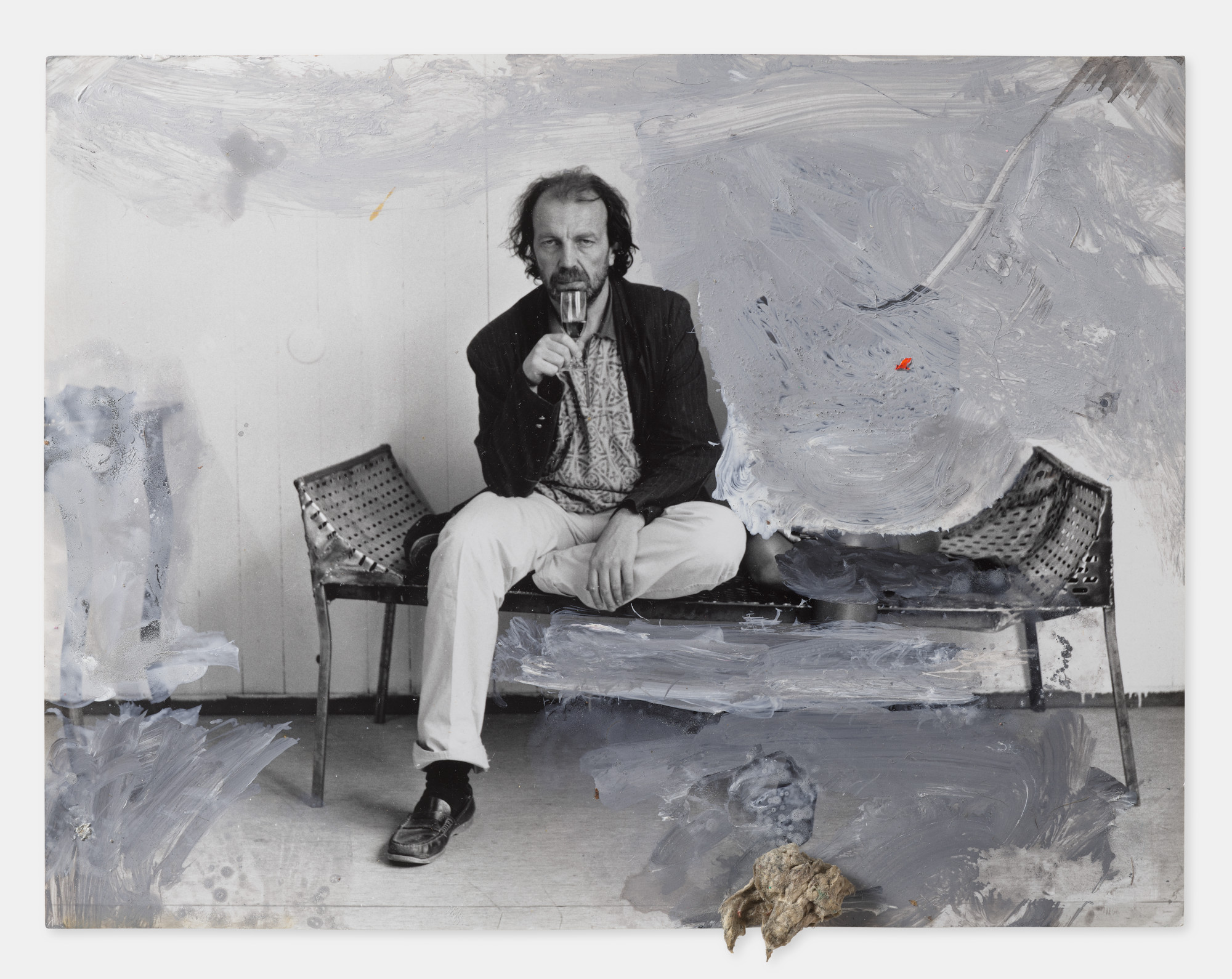
Some 15 years ago, Oscar Murillo was just starting his career when he found an unexpected fan in the last chapter of his own: Franz West.
Murillo was then in his early 20s and working from a small East London studio affiliated with dealer Jonathan Viner. He offered to help install the gallery’s next show, a solo effort by West’s wife, painter Tamuna Sirbiladze.
“At that time, I was making these small maquettes from rocks, paper, and plastic,” Murillo recalled in an interview. “Franz found one as he was roaming around. He asked me if he could acquire it for his collection.” The purchase was nice, but “the real impact,” Murillo explained, “was from getting feedback and endorsement from such a respected artist.”
“Franz West: Papier” installation view at Frieze Masters, 2023. Photo: Lucy Dawkins. Courtesy of Gagosian.
That memory has been on Murillo’s mind of late as he’s worked with Gagosian to organize a presentation of West’s works on paper for Frieze Masters, which opens in London this week. (West is a longtime Gagosian artist. Murillo, notably, is not.)
Spanning the artist’s career from the early 1970s through his death in 2012, the selection plays up West’s penchant for blending modes and materials to witty effect. On view are magazine pages transformed with felt-tip illustrations, and photographs made textural with gouache globs. In some pieces, newspaper clippings are collaged on foam, then painted over; in others, the process is reversed.
Franz West, Untitled (2005), detail. © Archiv Franz West and the Estate Franz West. Photo: Prudence Cuming Associates Ltd. Courtesy of Franz West Privatstiftung and Gagosian.
West’s gift for deconstructing art forms through juxtaposition—subtraction by addition—is on full display, as is his droll love of language. Throughout the Frieze show, you can see the late artist flittering between Pop art and abstraction and surrealism—sometimes in the same composition.
“It was a wonderful experience to assemble the works,” Murillo said. “Stepping back and looking at things, I just kept seeing clusters and constellations of performativity rendered with aesthetic playfulness. The drawings are manuscripts, like footnotes or filmstrips [with] a philosophical thought rendered in space.”
Oscar Murillo, 2018. Photograph by Greg Lin Jiajie. © Oscar Murillo. Courtesy the artist and David Zwirner.
Murillo and West are not, on the surface, an obvious pair. But if you jam their two practices together, as the latter might do with disparate material in a collage, you’ll begin to spot similarities. Like West, Murillo hops between mediums—painting, installation, sculpture, video—and often creates artworks that are activated through viewers’ engagement.
For Murillo, what he and West share isn’t so much a visual language as it is an approach.
“The idea’s of Franz West’s work as a fluid theoretical system has been important to my own thinking,” he explained. “His work is an all-encompassing practice which ranges from sculpture to collage, from performance to furniture. It is not limited to one discipline, and the environment is functioning as a recurring source of inspiration.”
West, Murillo went on, was inspired by the Viennese Actionists of the 1960s and ‘70s and their “notion of the ‘body as a canvas,’” and examination of “taboos such as gender roles, bodily integrity, and the reinstatement of one’s own sovereignty. In a similar way, the fabric of life within my surrounding environment continues to be woven into my practice.”
More Trending Stories: